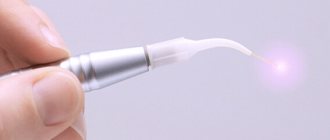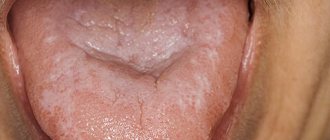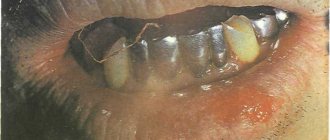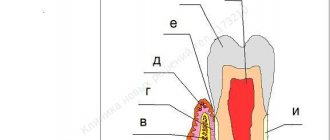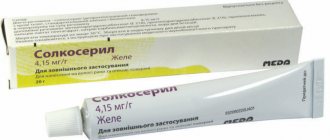"Levomekol" is an antibacterial combination drug for external use with a wide spectrum of action. Levomekol ointment prevents the spread of pathogenic microbes, eliminates swelling, accelerates wound healing, and also increases local skin immunity.
Levomekol for burns
This combination is provided by two active components in the ointment - Chloramphenicol (aka Levomycetin) and Methyluracil. Chloramphenicol is a natural antibiotic that actively blocks intestinal, pseudomonas and staphylococcal bacilli. And methyluracil accelerates the regeneration of the epidermis. The peculiarity of methyluracil is its ability to easily and quickly penetrate into the dermis, without affecting the membrane cell membrane. This process is associated with the removal of excess fluid from the intercellular space, which usually causes swelling and bruising.
What is Levomekol used for?
Levomekol has a multifaceted therapeutic effect:
- quickly reduces the inflammatory process, prevents its spread to healthy tissues;
- prevents the growth and reproduction of bacterial infectious agents;
- quickly eliminates swelling by normalizing microcirculation;
- ensures delivery of nutrients and biologically active substances, as well as molecular oxygen, to the affected tissues;
- stimulates the regeneration of inflammatory cells of all layers of the epidermis;
- increases immunity at the local level.
The ointment quickly removes all inflammatory processes on the skin
It is worth noting that the presence of purulent discharge and necrotic tissue does not prevent Levomekol ointment from performing its function. The drug can be used to disinfect and accelerate tissue regeneration.
Levomekol, ointment for external use, 40 g, 1 pc.
STADA, Russia
Price from 116₽
There are contraindications. Specialist consultation is required.
Vulvovaginitis: symptoms
Symptoms do not depend on the cause of the disease. Signs of an inflammatory process in the vulva and vaginal mucosa:
- itching
- burning
- painful sensations in the area of the external genitalia, aggravated by walking
- pain during intercourse
- scanty purulent discharge from the vagina (with mechanical damage to the mucous membrane, it can be abundant)
- increase in body temperature
Little girls may experience neurotic manifestations: sleep disturbance, increased excitability, tearfulness.
The disease can be acute or chronic. Symptoms of the forms of pathology differ only in the degree of severity.
Indications for use of Levomekol ointment
Since Levomekol ointment has an antibacterial effect, and at the same time stimulates the restoration of tissue structure, the drug is indicated for the following diseases:
- infection of wounds with pathogenic microflora, ulcers and purulent abscesses on the epidermis;
- burns (mostly 2nd and 3rd degree);
- violation of tissue integrity due to injuries;
- necrotic processes;
- weeping and dry eczema;
- calluses;
- trophic ulcers;
- frostbite of the extremities (superficial layers of the skin);
- pimples, acne, carbuncles, boils;
- otitis and sinusitis (including with purulent discharge);
- treatment of sutures after surgery
- bedsores;
- haemorrhoids.
Levomekol ointment can be used for children
"Levomekol" can be used for children from 1 year. But before this, it is imperative to consult a pediatrician.
Dry nasal mucous membranes
Dryness of the nasal mucosa is a sign of certain pathologies, and if left untreated, this condition threatens atrophy. To help a person with such a problem, you can consult an otolaryngologist at a medical clinic and take the necessary tests. Timely treatment will help maintain mucosal balance and avoid loss of smell.
Causes
Both external and internal factors can lead to dry mucous membranes. In the first case, dryness is a response to the irritating influence of the environment, and in the second, it is a symptom of a certain pathology.
Dry nose can also be caused by:
- bad habits, smoking (active or passive, hookahs or electronic cigarettes);
- alcohol abuse (due to the effect of toxins on the body);
- living in industrial areas where there are emissions of harmful substances into the air;
- work in hazardous conditions, in dusty rooms;
- work in a hot room, in hot air conditions;
- abuse of air fresheners;
- monotonous diet, lack of vitamins and microelements.
Vasoconstrictor nasal drops can also cause dryness if used uncontrolled, for a long time and not as prescribed by a specialist. It is best to avoid drops and, if there is no nasal pathology, install a humidifier in the room, which will relieve dryness. This is especially true in autumn-winter, when the heating season is underway and the humidity in apartments is below normal.
Features of the course of the disease
Insufficient hydration of the nasal passages is accompanied by a feeling of burning, itching and dryness. At first, dryness can be dealt with by rinsing the nose with sea water and using moisturizing drops, but in the future the situation will not improve due to the progression of the pathology.
The first manifestations of nasal dryness should not be ignored and independent treatment should be started. This may lead to an imaginary improvement, but the mechanisms themselves and the cause of the pathology cannot be eliminated. If the condition has been haunting you for several days, contact an otolaryngologist and get examined.
The nasal passages and the tissues lining them are complex. They contain special glands that produce mucus in the required volume so that the nose does not dry out and performs its functions. The regulation of the glands is very delicate; they respond to changes in the external environment, harmful effects, etc. For example, in a dusty room, more mucus is released in order to delay microparticles in time and prevent them from entering the body. These particles are removed with mucus. But in a damp room, for example, in a swimming pool, sauna or bathhouse, the mucous membrane produces less secretion due to the already moist environment around. The main role of the mucous membrane and its variable reaction is to protect the body from pathogenic microbes and dust. Microscopic villi constantly work and expel foreign bodies, protecting the body. But with insufficient mucus secretion, dryness in the nose occurs, and the tissues themselves change their structure, lose elasticity, become inflamed and swollen, and microcracks and bleeding wounds form on the surface. All this provokes unpleasant sensations.
Excessive dryness in the nose appears at any age - both children and adults can suffer from it, but the mechanisms and causes of development differ. To determine exactly why your nose is dry, a visit to the clinic is necessary.
Symptoms
Symptoms of dry mucous membranes appear in combination with other manifestations, often significantly complicating a person’s life. Doctors name among the signs:
- itching in the nose, dryness and burning, which appear due to microtrauma due to loss of moisture from the cells of the nasal mucosa;
- dry mouth and nasal congestion, which especially often manifests itself in the morning, when the mucous membrane swells at night, and in the morning a person cannot breathe normally due to congestion;
- constant dryness, accompanied by crusts in the nose, which are difficult to remove with daily cleansing, and when the crusts are forcibly removed, minor bleeding appears;
- profuse hemorrhages from the nose, when the dry mucous membrane is often injured, and nearby large blood vessels begin to bleed;
- dryness of the border near the external opening of the nose, which is accompanied by cracks, peeling, the appearance of crusts and dried blood;
- loss of smell is one of the latest symptoms that appears in the absence of proper treatment for the pathology.
Complications
In addition to the fact that dry mucous membranes in themselves are a rather unpleasant symptom, they also lead to various complications. In patients with this pathology, doctors note:
- pharyngitis;
- bronchitis;
- sore throat;
- sinusitis;
- pneumonia;
- atrophic rhinitis;
- frequent cases of ARVI.
Complications associated with dry nasal mucosa appear as a result of disruption of natural processes, when the mucous membrane ceases to perform its functions, including protective ones. Warming the air, retaining allergens from the outside, dust and tiny particles, trapping pathogenic microorganisms - all these functions when the mucous membrane is dry cease to be fully performed, so the larynx, nasopharynx, and bronchi suffer. The development of complications may be delayed if the process lasts a long time.
Dry nose as a symptom of pathologies
A feeling of dryness in the nose should alert you, since this sign may be a symptom of another disease that needs treatment. Dry nose can be caused by:
- catarrhal rhinitis - a chronic form of pathology leads to atrophy of the mucous membrane;
- hypertrophic rhinitis - pathological growth of the lining membrane, due to which the passage of air is disrupted, swelling often appears;
- scleroma - the pathology is infectious in nature and can even lead to death;
- Sjögren's syndrome - inflammation of not only the nasal mucosa, but also the salivary glands;
- diabetes mellitus is a metabolic disorder, including at the micro level, when the nasal mucosa suffers;
- hormonal changes - usually occur in older people due to a decrease in the level of sex hormones, when dry skin manifests itself throughout the entire body, and not just in the nasal passages.
Treatment for dry nose
Therapy should be carried out by a specialist, as it is important to determine the cause. Methods for eliminating pathology include:
- isotonic salt solution for irrigation of the mucous membrane from the inside - such solutions are produced based on table salt. They have a very gentle effect on the mucous membrane, improve the rheological properties of the discharge, dilute its composition and increase the activity of the epithelial cilia. The chemical composition is more reminiscent of sea water. The drugs are effective at the early stage of pathology with minor dryness;
- oils for moisturizing when crusts form - doctors recommend using peach, sea buckthorn or flaxseed, which perfectly soften crusts and help cleanse the nose. After removing the crusts, if wounds appear, the area can be treated with Solcoseryl. It is better to use oil occasionally, as it disrupts the functioning of the eyelashes, making it difficult for them to move;
- ointments with an antiviral effect - oxolinic ointment or Grippferon is used to strengthen local immunity;
- drugs against nosebleeds - for weak walls of blood vessels, the drug “Ascorutin” is recommended, which also contains vitamin C to strengthen the immune system;
- inhalations - carried out both at home and in the clinic, special drugs (isotonic solutions) are added to the inhaler, which must be inhaled in sessions on the recommendation of a doctor;
- rinsing the nose - a procedure using a weak saline solution will help get rid of dust and small foreign particles, but it must be done strictly according to indications, so as not to upset the balance of the mucous membrane.
Treatment of dry nasal mucosa must be competent. The causes are not always obvious, so only a doctor, after an examination, will determine what caused the problem and prescribe remedies to eliminate the pathology.
Author
Yampolsky Sergey Zigfridovich
otorhinolaryngologist (ENT)
Candidate of Medical Sciences
40 years of experience
+7
Contraindications
Like many drugs, Levomekol has contraindications:
- individual intolerance to the components of the medication;
- hypersensitivity of the body;
- fungal infections of the epidermis;
- tendency to allergic reactions;
- psoriasis.
The official instructions for use indicate that in pediatrics the ointment is prescribed starting from 3 years of age. However, many pediatricians, based on the harmlessness of Levomekol, allow its use from infancy.
Side effects
Levomekol is considered a universal drug and is usually well tolerated by patients. But in case of overdose (if the drug is used for more than a week), allergic skin reactions may occur.
- hyperemia;
- burning;
- itching;
- urticaria;
- dermatitis at the site of application;
- local swelling;
- When using vaginal tampons, candidiasis may occur.
No incompatibility with other medicinal products has been reported. Make sure that the ointment does not get into your eyes, mucous membranes or inside. In case of contact with eyes and mucous membranes, rinse them immediately with running water. If swallowed, the stomach must be rinsed.
Denial of the problem
In ENT practice, drug-induced rhinitis is considered a common problem, which remains unobvious to the average person, a non-specialist. At the same time, the consequences of constant use of vasoconstrictors are quite serious. First of all, this is the suppression of the natural functions of the mucous membrane - moisturizing and warming the air, resulting in the formation of crusts and bruises. Patients report constant dryness in the nose. And due to a decrease in mucus production, there is a sore throat and hoarseness of the voice. Reduction of blood vessels in the thickness of the mucous membrane leads to atrophic changes and thickening of mucus-producing glands, which further increases nasal congestion. By constantly using these means, people, without knowing it, provoke irreversible changes in the nasal cavity.
Levomekol in the treatment of burns
For burns, Levomekol is needed to prevent infection of the wound surface with pathogenic infections, as well as to accelerate tissue healing. Levomekol also copes with inflammation, which can lead to suppuration of the wound. The ointment cleanses the affected area well from both purulent discharge and necrotic cells.
The treatment system for a small area burn of 1-2 degrees is as follows:
- before applying the ointment, the wound is washed under running water;
- the ointment is applied to a sterile gauze pad, which is applied to the wound surface;
- the bandage is applied for a day;
- dressings are done every day - up to 5 times a day.
The burn is treated until the tissue is completely healed. The total duration of the course for minor household burns is 5 – 14 days.
Frequently asked questions about vulvar kraurosis
What causes kraurosis of the vulva?
The exact causes of the disease have not yet been established. It is assumed that viruses and infections, hormonal changes, disruption of the endocrine system, and autoimmune processes can serve as trigger factors.
How can I tell if I have vulvar kraurosis?
The main symptoms of the disease are itching, dryness, pain in the vestibule of the vagina, tightening of the skin of the perineum. Over time, the clitoris becomes smaller, the labia minora becomes thinner, the entrance to the vagina narrows, and the tissues atrophy.
Is it possible to cure lichen sclerosus?
The disease cannot be completely cured, but properly selected therapy can eliminate unpleasant symptoms and improve a woman’s quality of life.
Levomekol in the treatment of acne
"Levomekol" has an antibacterial and wound-healing effect, therefore it is widely used in dermatology, in particular, in the treatment of acne. The course of treatment depends on the severity of the disease and the number of skin rashes.
Small pimples are treated by applying a thin layer of ointment to the affected area. This is done in the evening for several hours, and before bedtime Levomekol is washed off. Within two weeks, pimples disappear, facial skin becomes even, and small scars heal.
Treating acne with ointment
Levomekol is applied to isolated inflamed pimples in a thin layer, covered with a small piece of cotton wool and left for 2-3 hours. Therapy lasts 2-3 days.
As for opened pimples, the medicine is placed directly into the resulting holes.
To treat acne, Levomekol is applied to the affected area overnight. In the morning, the ointment must be washed off. Typically, the course of treatment takes 2 weeks, during which the inflammation subsides and the acne breaks out or resolves.
To eliminate subcutaneous acne, you need to do the following:
- after washing with soap, the skin is cleansed with any tonic or lotion;
- Apply the ointment in a thin layer on a sterile napkin and apply it to the area of skin with acne;
- the bandage is fixed with adhesive tape.
The duration of the treatment procedure is 3-5 hours. If deep, painful ulcers appear on the skin, keep the bandage on the body all night.
The duration of therapy is about 7-10 days, depending on the degree of damage to the dermis.
Levomekol in the treatment of hemorrhoids
Levomekol ointment can be used as an addition to complex therapy for hemorrhoids during periods of exacerbation. It is recommended to use the ointment in cases where blood is released from the hemorrhoids. Since the drug has an antibacterial effect (wounds can be infected with feces), helps relieve inflammation and neutralize pathogenic bacteria, Levomekol is prescribed for the regeneration of anal tissue.
- it is necessary to wash the perineum and anus with soap and water and dry with a soft towel;
- apply a thin layer of ointment to the anus before going to bed;
- the area of influence from above is covered with a bandage and fixed with an adhesive plaster;
- When treating internal nodes, a tampon is soaked in ointment, which is then inserted into the anus.
Levomekol for hemorrhoids
The duration of therapy is 10 days. Since Levomekol is not a specialized antihemorrhoidal drug, after the inflammation has resolved, the decision to continue therapy and prescribe medications is made only by the attending physician.
Causes of the disease
Inflammation of the vulva and vagina appears due to the influence of such factors:
- violation of intimate hygiene rules, wearing underwear made of low-quality synthetics
- frequent change of sexual partners without the use of barrier contraception
- diseases of the metabolic system that can affect the vaginal microflora (diabetes mellitus, thyroid problems)
- hormonal imbalances characteristic of puberty and menopause
- taking antibacterial drugs (while taking antibiotics, a fungus like Candida is activated)
- chemotherapy and radiation therapy
- intoxication due to chronic infectious diseases
- mechanical injuries of the vulva and vagina, especially regular ones
The presence of more than two risk factors increases the likelihood of the occurrence of pathology several times.
Allergic vaginitis is also possible. Pathology is diagnosed in the presence of helminths.
Levomekol in the treatment of wounds
Levomekol helps heal damaged tissue and prevents infection of the wound surface. Moreover, it is not so important whether the wound has festered or not. If the wound is not purulent, then first the affected area is treated with an antiseptic. The ointment is applied in a thin layer overnight, then it must be covered with a sterile gauze cloth and secured with a bandage. Most often, wound treatment is required once a day.
If the wound festers, then using cotton-gauze swabs moistened with an antiseptic, the pus and secreted secretions are removed. Then Levomekol ointment is applied to the wound - it should be completely filled, but not too tightly. The affected area is covered with a gauze cloth, also soaked in ointment. As for the frequency of changing the bandage, it all depends on the amount of pus released. Usually a double dressing is sufficient.
And if the wound is deep and accompanied by an infectious lesion, then Levomekol is preheated to 35 degrees Celsius, then a sterile napkin is soaked in ointment (several can be used if the affected area is large) and injected into the lesion. If the affected area is large, use several napkins with Levomekol. It is important that the wound is filled completely, but not too tightly.
Note that to administer the medication into puncture and deep wounds, it is better to use a rubber drainage tube, and inject the heated ointment itself using a syringe.
The duration of therapy usually lasts from 5 to 10 days.
Use of Levomekol ointment in gynecology
Levomekol is successfully used in gynecology and urology.
In gynecology, therapy is carried out using tampons with ointment applied to them. A similar method is indicated for the treatment of the following conditions:
- inflammatory erosion of the cervix;
- inflammation of the uterine appendages (ovaries, fallopian tubes);
- divergence of vaginal sutures after ruptures during childbirth or operations.
The treatment system consists of the following sequence of actions:
- before use, a woman must thoroughly wash and dry the skin of the treatment area and perineum;
- if therapy is used after the divergence of vaginal sutures or after operations, then the sutures must be treated with a weak solution of potassium permanganate or furatsilin;
- you need to make a small cotton swab, put an ointment on top of it measuring 15 mm x 15 mm, and 5 mm high;
- insert into the vagina at night and remove in the morning;
- if therapy is used after the divergence of vaginal sutures or after operations, then the ointment is applied to a gauze bandage and applied to the sutures. Then put on clean underwear (if necessary, you can additionally use a pad). The dressing remains on for 2 to 6 hours.
Using the method described above, the active substance of the ointment is delivered to the affected area and absorbed into the surrounding vaginal tissue.
In urology, Levomekol is used in the treatment of balanitis and balanoposthitis in men, as it has anti-inflammatory and antimicrobial effects. The treatment system consists of the following sequence of actions:
- before applying the ointment, the head of the penis is washed with a weak solution of potassium permanganate or furatsilin, removing pus and dead tissue;
- Levomekol is applied to the affected area in a dense layer.
The remedy is applied 1-2 times a day until complete recovery. After the inflammation is relieved, Levomekol is applied for another week, 1 time per day - in the evening, before bedtime.
Diagnosis of kraurosis of the vulva
At the initial stage of the disease, due to the lack of specific symptoms, differential diagnosis of kraurosis with vulvovaginitis, neurodermatitis, vitiligo, leukoplakia, lichen planus and diabetes mellitus is important.
As the disease progresses, the clinical picture of vulvar kraurosis is so pronounced that the doctor makes the diagnosis during a routine gynecological examination.
To assess the degree of changes in the skin and mucous membranes, vulvoscopy is performed, and, if necessary, a microscopic examination of a smear from the cervix for flora, a cytological examination of a smear for atypical cells, an immunogram, and a clinical blood test. If malignancy of the process is suspected, a biopsy of vulvar tissue is prescribed with further histological analysis of the biopsy sample.
Levomekol or Vishnevsky ointment. What's better?
Let's start with the fact that Vishnevsky ointment and Levomekol, although they are used in similar cases, still have a multidirectional spectrum of action. Thus, Vishnevsky ointment is effective when the wound is in the process of regeneration. Therefore, it cannot be used when the wound is suppurated or severely inflamed. Yes, the drug contains an antiseptic, but its concentration is not enough to provide a bactericidal effect. Moreover, tar and castor oil stimulate blood circulation in the affected area, which worsens the situation.
This is why Vishnevsky’s ointment is not as effective, since Levomekol has higher antibacterial activity due to the presence of an antibiotic in it and accelerates the process of outflow of pus from the wound. Also important are the following distinctive features that determine the superiority of Levomekol ointment:
- no unpleasant odor;
- higher repair characteristics;
- does not provoke irritation in the treatment area;
- when treating boils, Levomekol quickly initiates an abscess and opening of the abscess, followed by wound healing.
But if Vishnevsky ointment helps the patient, then there is little point in changing it.
Analogs
Analogs of Levomekol ointment have a bactericidal and healing effect. But the difference lies in the active ingredient of the drug. So, among the analogues one can name Fugentin, Levosin (additionally has an analgesic effect), Protegentin, Fastin-1, Salicylic-zinc paste.
Synonyms, that is, drugs with the same substance (but in higher concentration) as Levomekol ointment, can be considered Netran and Levomethyl. Substitute medications can only be prescribed by the attending physician.


